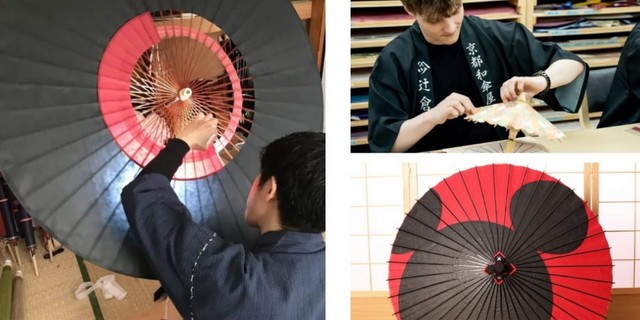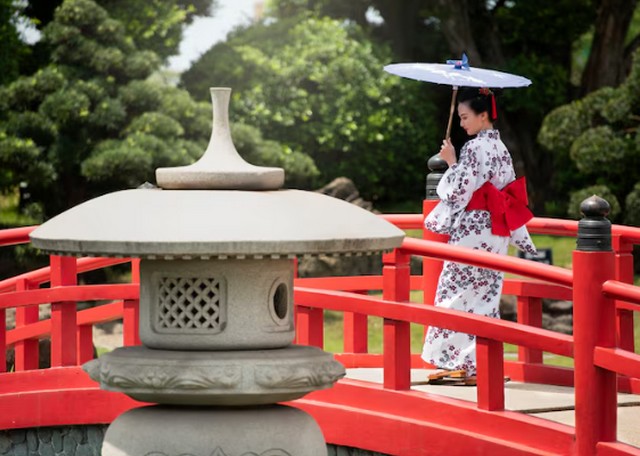The Wagasa (和傘), literally « Japanese umbrella, » is much more than a simple accessory for protection against the rain or sun. It is a true treasure of Japanese craftsmanship, a symbol of elegance, and a pillar of traditional Japanese arts.
A Thousand-Year History
 Imported from China around the Heian period (794-1185), the Wagasa was initially heavy and non-foldable, often perceived as a mystical object capable of driving away evil spirits, and reserved for the nobility.
Imported from China around the Heian period (794-1185), the Wagasa was initially heavy and non-foldable, often perceived as a mystical object capable of driving away evil spirits, and reserved for the nobility.
It became popular and perfected during the Edo period (1603-1867).
 Craftsmen invented techniques to make them foldable and lightweight, transforming them into an everyday object that combined utility and aesthetics.
Craftsmen invented techniques to make them foldable and lightweight, transforming them into an everyday object that combined utility and aesthetics.
« Logical and perfectly functional, they embody the beauty of age-old craftsmanship.
That’s what makes these umbrellas so appealing, » says the owner of Hiyoshiya Co., Ltd., the only manufacturer of Kyo-wagasa (traditional Japanese umbrellas made in Kyoto).
Japanese umbrellas have been used as ornaments, talismans, and props for Kabuki and Nihonbuyo dances.
They have also long been valued for the way they enhance the appearance of the person holding them.
An old saying goes that women are most beautiful « in the darkness of night, under a distant gaze, or under an umbrella. »